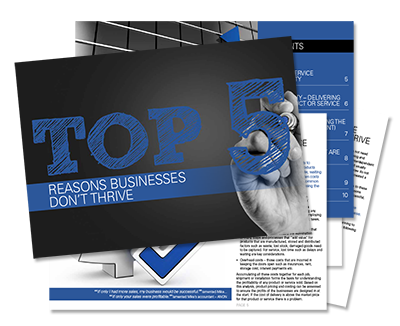Success Story
How a local manufacturer achieved significant improvements in productivity

A long-established presence in manufacturing and supplying products to the eastern states of Australia. Proudly family owned, grown from a commitment to working with their partners in delivering solutions to their customers.
Their goal has been to provide high quality products manufactured from Australian suppliers where possible.
Industry Category:
Manufacturing
The Solution:
Established more than 45 years ago; business growth in the years was strong – based on a good understanding of the industry and the partnerships that were developed with installers and the reliable supply of Australian manufactured raw materials.
The founder of the business had previous experience in a family business so with that entrepreneurial approach an opportunity in the market allowed a profitable business to grow.
For many years, the business operated relatively profitably allowing the owner to build a solid financial position and subsequently implement a management structure where the business was run by management. In the last 15 years business conditions deteriorated with the emergence of imported materials and finished goods.
The profitability of the business was significantly impacted along with a stalling of business growth. The fundamentals of business profitability were impacted by margin compression through pricing and subsequently an impact through the loss of the economies of scale as manufacturing volumes reduced. In the last 5 years, profitability had declined to a breakeven perspective.
An organisational restructure resulted in the replacement of several management roles, replaced with a streamlined leadership structure. The decision was made to address the ongoing profitability issues and a realisation that the culture of the organisation had deteriorated significantly.
As part of the turnaround strategy, the new leadership team determined that the creation of a longer term strategic approach, develop a plan and them implement that in a consistent way.. Graeme Fitzgerald was engaged to work with the leadership team to develop a strategic business plan with a clear focus on returning the business to an acceptable level of profitability.
The Strategic Plan was developed by establishing the fundamental understanding of why the business existed (It’s Purpose), developing the vision for success, and then getting clarity of what is the agreed strategic approach to delivering that vision. The benefits of using this process were to get clarity of what the business was about and aligning how the business activities would be structured.
The decision to build the strategic plan based on a deliberate strategy helped the leaders in the organisation to understand what they needed to “beat their competition at” and what they would “meet” the market at. Whilst doing this work, the team realised that they were often trying to be “all things to all people” which meant they were not able to create a point of difference relative to their competition.
—
The strategic plan focused on securing the short-term profitability of the business, and also on ensuring the culture of the organisation would be one that created sustainable success into the future. The underlying profitability of the business meant that there were two areas that needed to be address:
- Improving the Gross Profitability
- Lowering the overall cost to operate.
These key focuses have been developed with consideration for the business strategy to beat the competition in four specific areas of the customer experience.
The plan is focused on 3 key areas:
- Marketing & Sales – promoting products and solutions and maintaining a strong presence in the market with our ideal customers.
- Manufacturing – creating efficiencies through planning and scheduling, operations team development and equipment condition.
- Customer service – ensuring every person in the organisation is focused on meeting the needs of the customer from a delivery, quality and consistency perspective and create a focus on innovation to help our customers be the preferred supplier in their markets.
Phase 1 Implementation
The leadership changes created visibility of many opportunities for productivity improvements. Whilst some of these resulted in removing costs, the bigger opportunities were relating to the organisation of the people in the business. Given the significant changes involved in changing how the organisation works, a phased approach was taken to implement these changes.
The phased approach involved the creation of a unified Operations team; with the creation of direct front-line leadership roles. This approach was deliberately targeted at creating an organisational structure that enabled engagement of the people doing their job and starting to establish a “can do” feeling in the team.
A targeted approach to manufacturing improvement, built off a solid production planning and scheduling process. Many manufacturing organisations with surplus capacity find that inefficient practices develop. The engagement of the people around the business purpose and vision has been the start to addressing these practices. Whilst many opportunities remain to be captured, the integration of production planning with the warehouse despatch logistics has immediately created transparency.
Initial “quick wins” were identified with hundreds of thousands per annum in savings implemented within 6 months.
—
Executive Summary:
The implementation of the structured approach to create the strategic business plan has provided a foundation. The alignment of how the business operates with the strategy to create a point of difference identified a few important areas requiring early attention.
- Focusing on the company values
- Addressing the product pricing structure and approach
- Establishing a sales budget and monthly forecasting process
- Address work performance “entitlement”
- Scheduling of jobs and targeting sales to achieve targeted outcomes
Benefits:
The major outcomes of the strategic plan as the first-year approaches have been widespread and significant:
- >90% of the organisational changes have been implemented or varied to achieve significant savings.
- Sales forecast for Year 1 expected 95% of target whilst EBITDA is 130% of plan
- Workforce are engaged, positive and continue to build the can-do approach
- Sales team development process has commenced from which priorities will be progressed.
The business is now positioned to maintain its profitability and to start the drive to achieve significant improvements in productivity. The lessons learned in the first year are clear on the value of strong people-based leadership. The priorities moving forward are to target the manufacturing improvement through leadership, planning and visibility of performance. Other significant shifts in productivity will be created through the implementation of an integrated ‘ERP system’ and building the capability of the team to do what is required to respond as the external environment changes.
Want to improve profitability and culture in your business? Get in touch today to find out more or book in for a free 60-minute Discovery Session.
Are you looking for sustainable success?
Book Your Free STRATEGY SESSION NOW

